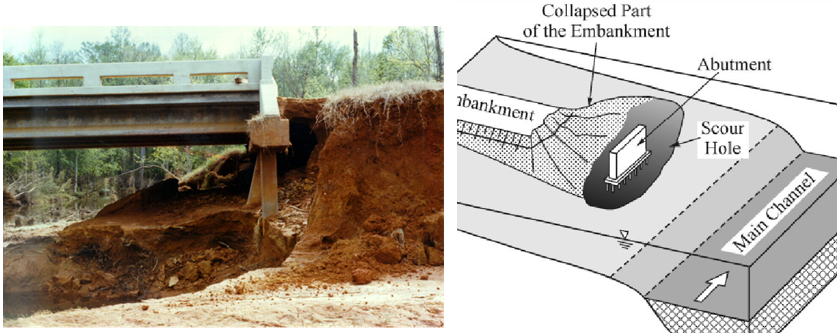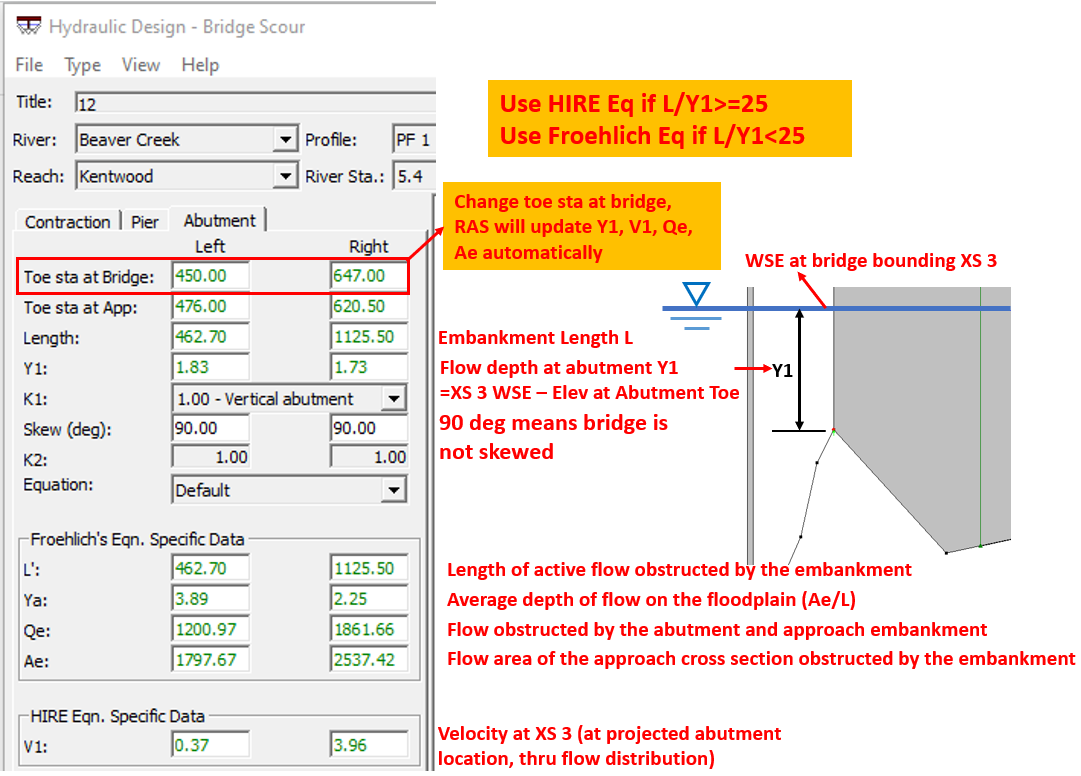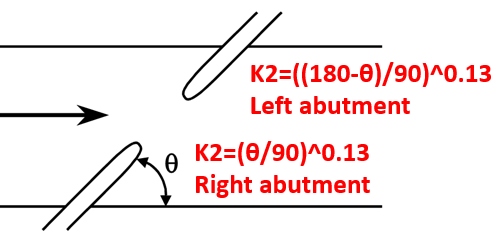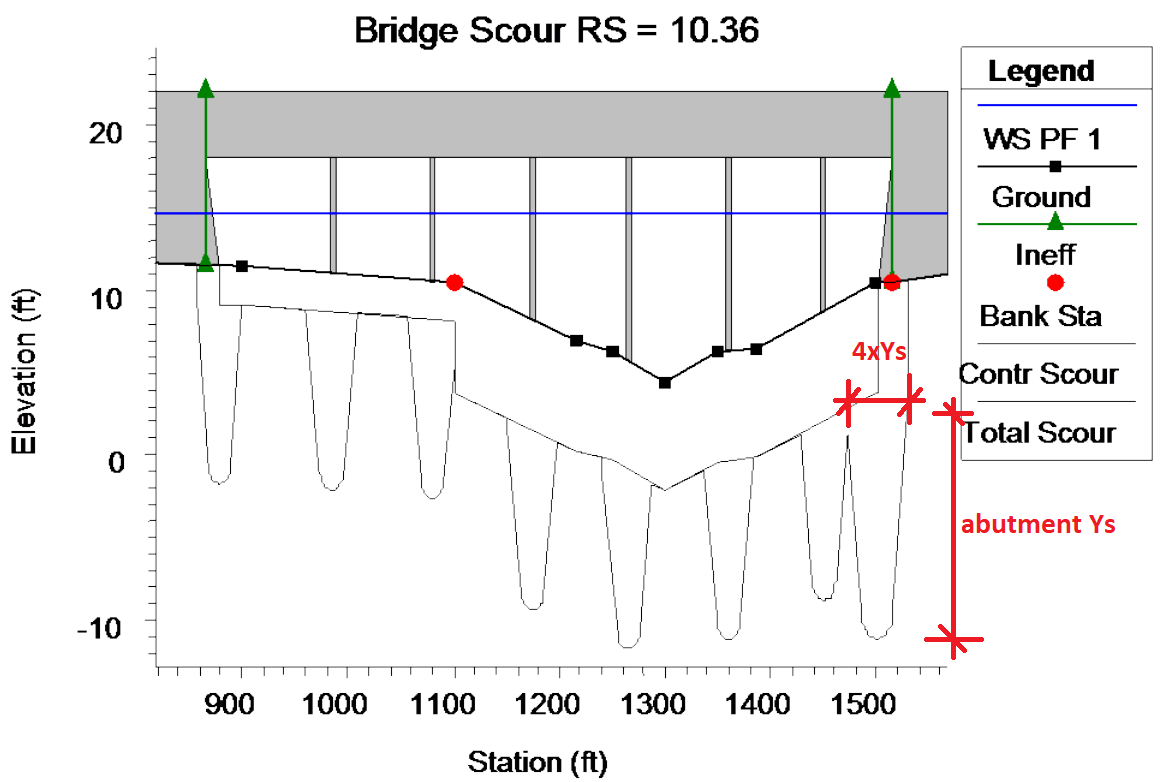Bridge Scour Analysis By HEC-18 Equations – Local Abutment Scour (2 of 2)
In addition to NCHRP 24-20 Abutment Scour Approach, FHWA HEC-18 includes two more widely known abutment scour equations – HIRE Equation and Froehlich’s Equation. Since both of them are consistently over-conservative (over-estimating) at predicting abutment scour depths (Figure 1) and some agencies including TxDOT and LA DOTD do not recommend using them for abutment scour depth calculation at all; and instead, they require an abutment to be protected against potential long term degradation and contraction scour at the abutment toe by revetments such as riprap and concrete pavement (Figure 2).


Some of the required input parameters of HIRE Equation and Froehlich’s Equation are very difficult to estimate such as length of active flow L’, Flow Qe or Flow Area Ae that are obstructed by the embankment. A practical way to acquire these parameters is to retrieve them from the default HEC-RAS bridge abutment scour calculation window (Figure 3). The actual calculation should be done outside HEC-RAS by using a spreadsheet or FHWA Hydraulic Toolbox since HEC-RAS scour equations are not always up to date.

K1 is the abutment shape coefficient (Figure 4) while K2 is the embankment angle coefficient (Figure 5). For a skewed bridge, the angles used to calculate K2 are different for left and right abutments.


FHWA Hydraulic Toolbox is a useful tool to calculate abutment scour depths by Froehlich’s Equation (Figure 6) or HIRE Equation (Figure 7).


HEC-RAS bridge scour routine assumes one side abutment scour hole top width as 2.0 x Ys and plots the total top width of the abutment scour hole as 4.0 x Ys in Figure 8.

It should be emphasized that the abutment scour depth calculated from HIRE or Froehlich’s Equations is the “pure” abutment scour depth which does not include the depth component from the contraction scour; in contrast, the abutment scour depth calculated by NCHRP 24-20 Approach is the sum of abutment scour depth and contraction scour depth.
Using the two example projects which come with HEC-RAS installation, the abutment scour depths by NCHRP 24-20 Approach were compared to those calculated by HEC-18 HIRE Equation and summarized in Table 1. For the two example bridges, the abutment scour depths (including contraction scour depths here for comparison purpose) calculated by HEC-18 HIRE Equation are 2 to 4 times as much as the values by NCHRP 24-20 method. The above statement is, of course, not conclusive, but it does show the abutment scour depths vary significantly with different methods.

1 COMMENT